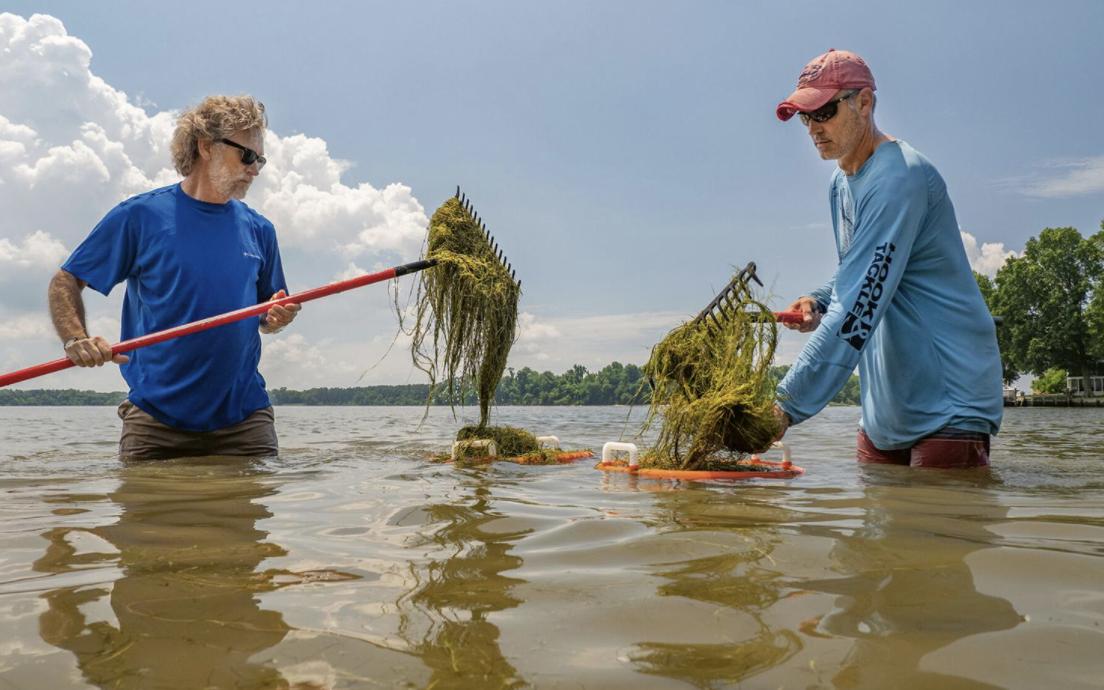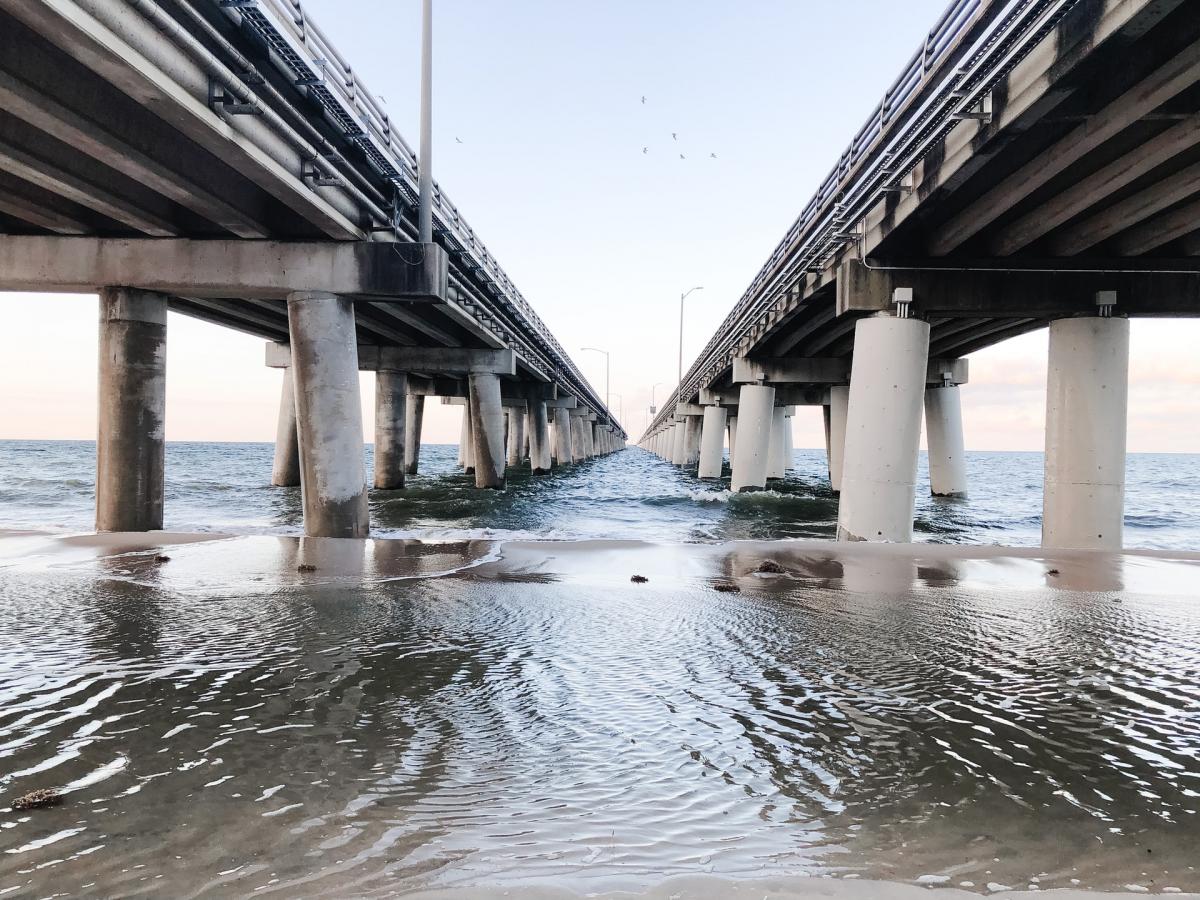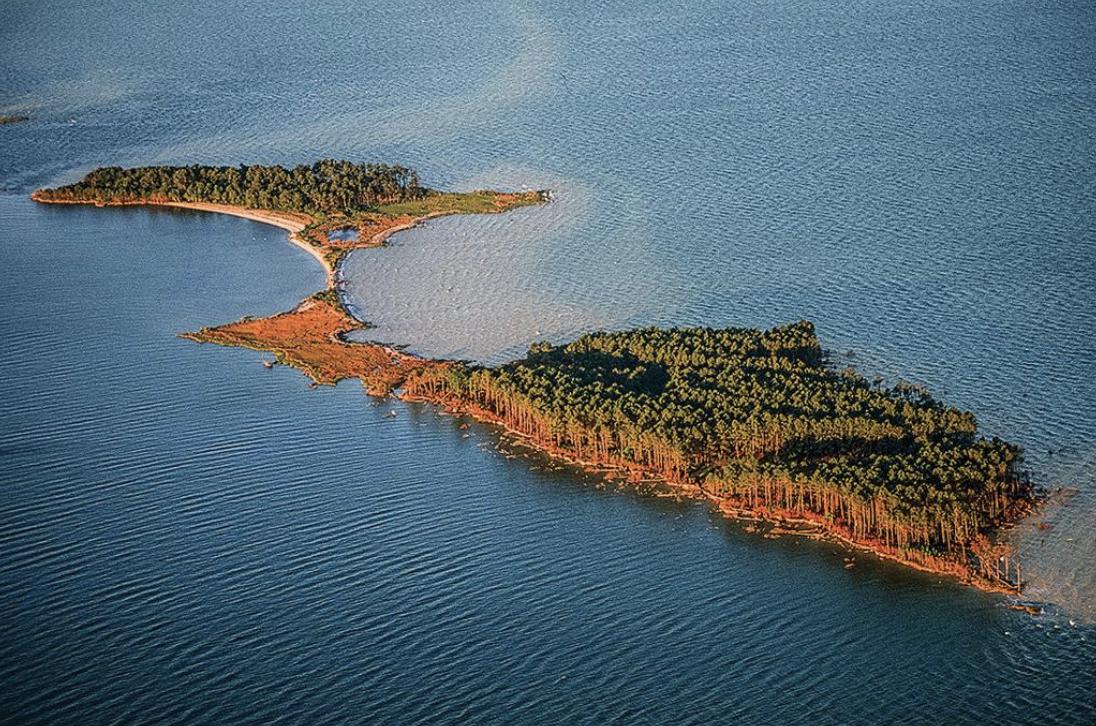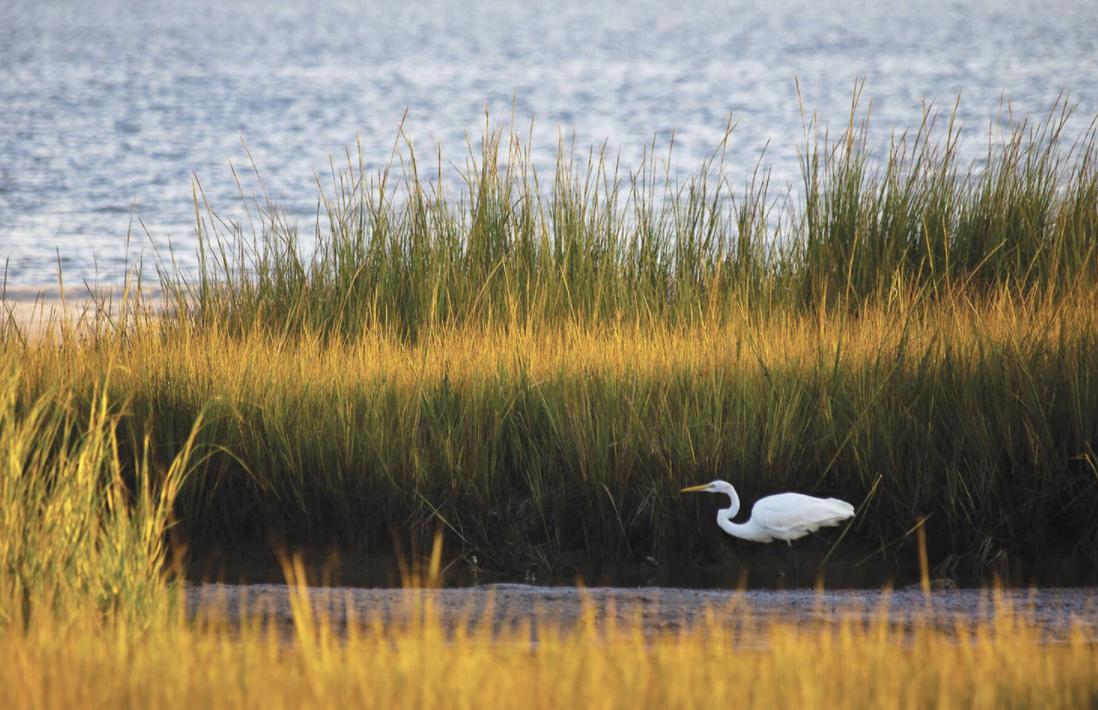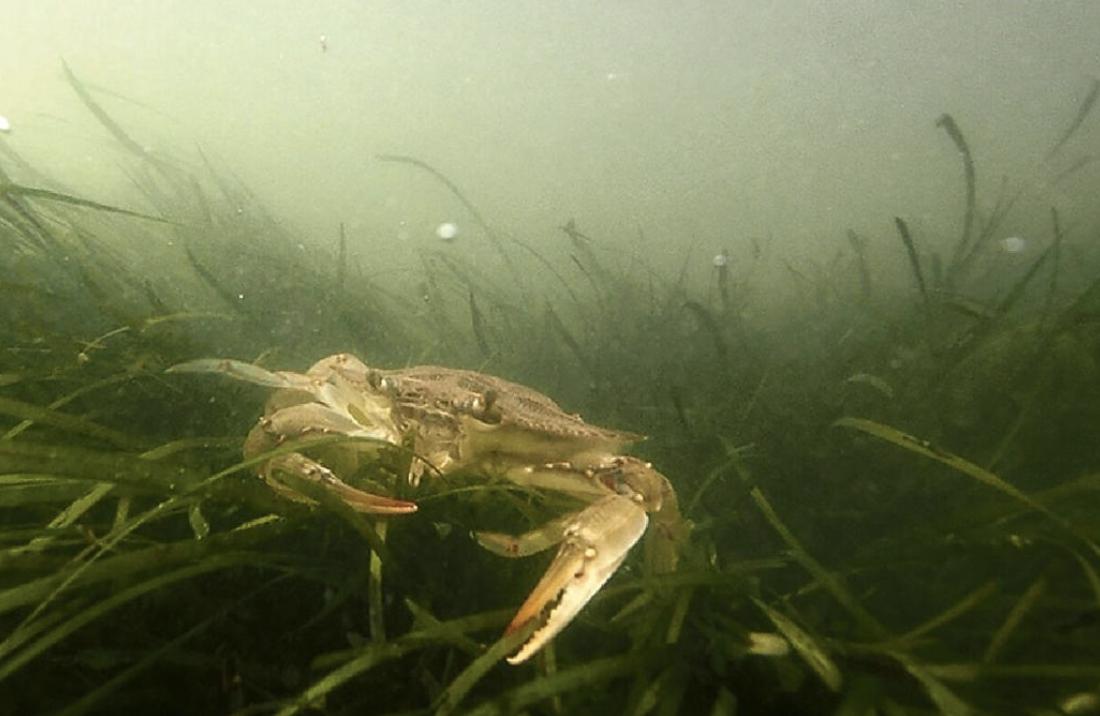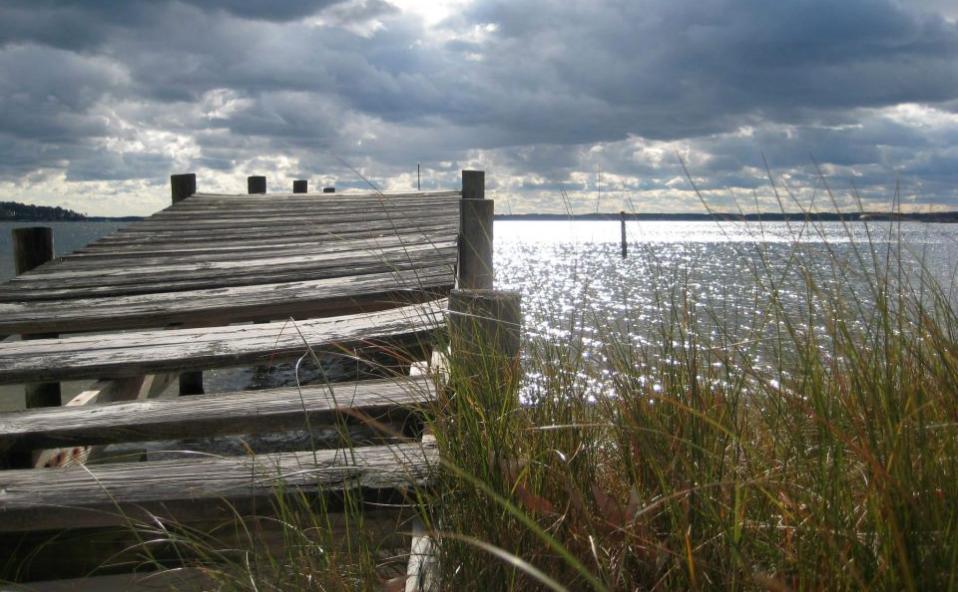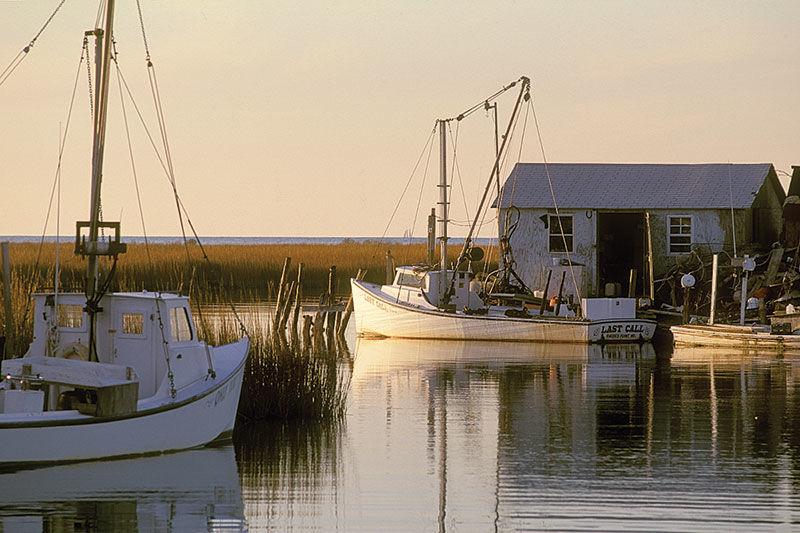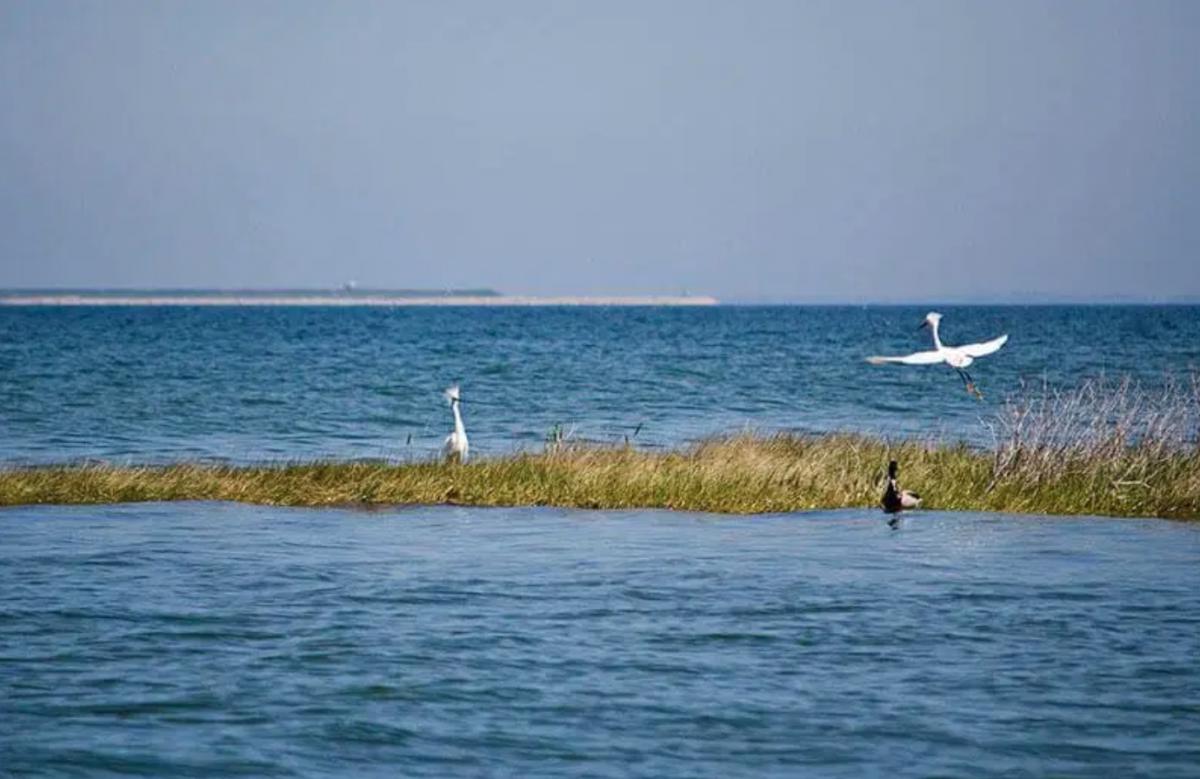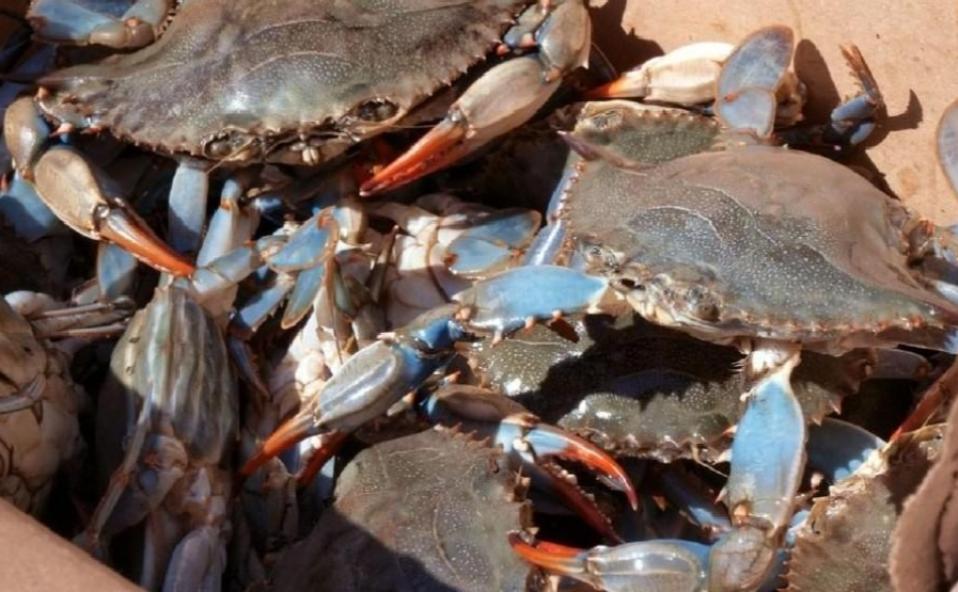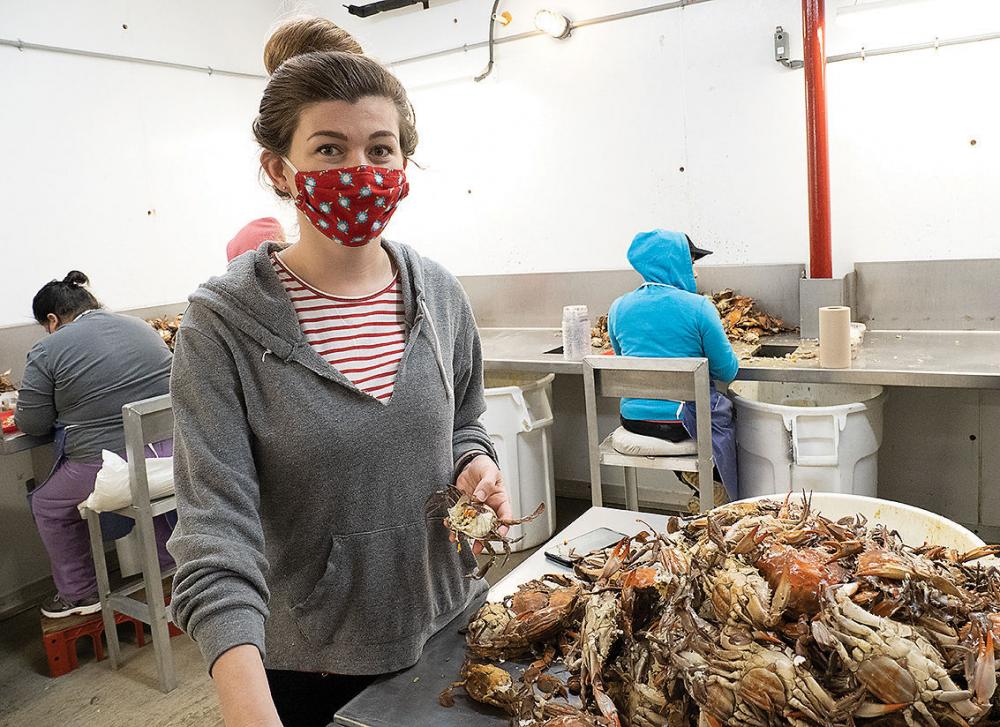Restoring the Chesapeake Bay’s depleted underwater meadows is a painstaking process, requiring lots of elbow grease, savvy and patience. Paradoxically, it begins by pulling up a little of what’s left of the critical aquatic habitat.
Standing knee-deep in the Wye River on Maryland’s Eastern Shore, Elle Bassett and a handful of helpers raked clumps of wispy green grass from the water one warm June day. They piled the vegetation, known as horned pondweed, in orange plastic baskets for transport by boat to shore.

Miles-Wye Riverkeeper Elle Bassett displays a clump of horned pondweed collected for its seeds. Photo by Dave Harp, Bay Journal
“This one is easier than others to harvest,” noted Bassett, the Miles-Wye Riverkeeper. Some species of Bay grass are more firmly rooted in the bottom, she explained, and have to be collected one handful at a time.
For the last four years, Bassett and other staff and volunteers with the nonprofit group ShoreRivers have been working with experts from the Maryland Department of Natural Resources and Anne Arundel Community College learning how to restore Bay grasses.
“We’re doing what I would call a ‘technology transfer’” said Mike Naylor, a DNR biologist specializing in the Bay grass restoration effort who was on hand to help.
Now, with a $75,000 grant from the Chesapeake Bay Trust, ShoreRivers has ramped up its efforts, with a focus on mid and upper Eastern Shore waters. Their aim: to double the state’s overall restoration capacity.
A lot is at stake. Bay grasses, also known as submerged aquatic vegetation, or SAV, are a vital component of the Chesapeake ecosystem. They provide food and shelter for waterfowl, turtles, fish, blue crabs and other creatures. They also consume some of the excess nutrients that foul the water, clearing it up and infusing it with fish– and shellfish-sustaining oxygen. For those reasons, the grass beds are closely monitored as an indicator of the Bay’s health.
Like the rest of the Bay, the grasses need all the help they can get. Historical photos show that they once covered at least 185,000 acres of the bottom of the Chesapeake and its tributaries, and probably much more. But by 1984, with the Bay suffocating from nutrient and sediment pollution, the coverage had dwindled to just 38,227 acres.
Bay grasses are so important to the estuary’s health that federal, state and local agencies and nonprofit groups have been trying for decades to restore them, with mixed results.
Rebound, then regression
A few years ago, it looked like the Bay’s grasses were rebounding quite well on their own. By 2018, aerial surveys spotted underwater vegetation growing across more than 100,000 acres of Bay and river bottom, well on their way to achieving the restoration effort’s goal of having 130,000 acres by 2025.
Water quality has proven to be a major factor, both in the past decline of the Bay’s aquatic plants and in the recovery seen so far. Like upland vegetation, underwater grasses need sunlight to grow. But sediment or nutrient-fed algae blooms cloud the water, which stunts or even kills the plants.
“It really only required a modest improvement in water quality for SAV to improve,” noted Brooke Landry, a DNR biologist and chair of the federal-state Chesapeake Bay Program’s SAV workgroup.
But 2018 and 2019 brought heavy and persistent rains, which clouded the water and altered its salinity — another critical factor for sustaining certain species of underwater vegetation. The Bay’s grasses shrank by 40% in 2019 and by another 7% in 2020, the surveys found.
Now, manual grass restoration efforts, which seemed almost superfluous just a few years ago, have taken on renewed importance.
“I think every little bit does help,” Landry said.
For a while, in the 1990s and early 2000s, comparatively more money and effort were put into replanting lost aquatic grasses. There were some notable successes, such as the restoration of eelgrass beds in the seaside bays of Virginia.
In Maryland, biologists at Anne Arundel Community College figured out how to raise Bay grasses from seeds collected from the wild. They set up an aquatic plant nursery there capable of producing batches of underwater vegetation.
Around 2000, the Chesapeake Bay Foundation and the DNR teamed up to get students in more than 300 Maryland schools to grow aquatic vegetation in their classrooms and then take it out to plant on the Bay bottom.
Those broad-scale efforts succeeded in replacing some missing grass beds in places such as the Severn and Magothy rivers in Anne Arundel County. But they were “expensive, time-consuming and laborious,” Naylor said. The results also proved to be spotty overall, and funding dried up.
Out of necessity, the effort shifted to a lower gear.
“Instead of doing huge projects, we’ve been concentrating on small-scale restoration efforts of an acre or less,” Landry said. They’ve also chosen to skip the logistical challenges of raising aquatic plants in nurseries or classrooms and instead sow the seeds directly on the bottom.
The aim, she said, is to plant about 20 acres a year, roughly evenly divided between Maryland and Virginia.
“We started working with waterfront homeowners,” she explained, “planting little, tiny half-acre projects, just placing seeds offshore.” Those have worked, she said, in places like the upper Chester River.
“The hard part is collecting and processing seeds,” Landry added. Care must be taken to find grass beds lush enough they can afford to give up some seeds and still sustain themselves. Collectors limit their harvests to no more than a third of those beds.
Focus on the Shore
The aerial SAV surveys conducted by the Virginia Institute of Marine Science help to identify candidate sites for seed collection, but ground-truthing is still vital.
The patch of horned pondweed harvested in June had never been spotted from the air, noted Bassett, the Miles-Wye Riverkeeper. It was instead discovered by a ShoreRivers volunteer who routinely scouts local waters to check on grass beds.
ShoreRivers is focusing its efforts on restoring grasses in the four Bay tributaries in the mid and upper Shore. Of the rivers in those regions, only the Sassafras has a healthy stock of underwater vegetation, which has at times met and even exceeded the acreage goals set by the federal-state Bay Program. It’s lost ground lately, though, like much of the rest of the Bay.
Grass coverage in the other rivers — the Chester, Miles-Wye and Choptank — is well below acreage targets considered sufficient for ecosystem health.
Complicating restoration efforts: Each river has a different type or mix of underwater vegetation — horned pondweed, widgeon grass, redhead and wild celery — each with its own characteristics and optimal growing conditions.

Chester Riverkeeper Annie Richards (left), ShoreRivers volunteer coordinator Amy Narimatsu and volunteer Carole Trippe feed clumps of harvested redhead grass into a “turbulator,” which begins process of separating seeds from stalks. Photo by Dave Harp, Bay Journal
“SAV is almost as elusive as crabs in determining their patterns,” said Annie Richards, the Chester Riverkeeper.
The grasses harvested by ShoreRivers staff and volunteers are being taken to Chestertown, where the group has forged a partnership with Washington College to process and store the seeds for replanting the next spring. They’ve built a “turbulator,” a sort of Rube Goldberg contraption on the grounds of the college’s new Semans-Griswold Environmental Hall. It is based on a prototype built by Anne Arundel Community College.
In the turbulator’s big, water-filled fiberglass tank, ShoreRivers staff and volunteers dump in batches of Bay grass to give them hot tub-like baths. Shopvacs churn the water, beginning the process of separating the tiny grass seeds from their stalks. The seeds and some plant matter sink to the bottom, where they’re drawn out by draining the tank.
Staff and volunteers must meticulously cull the seeds from plant debris by hand. They first sift them through a series of wooden trays lined with successively finer screens, much as miners pan for gold. Finally, they pore over them, trying to spy and winnow out seeds that don’t look like they’re ripe enough to germinate successfully later.
“Every seed counts,” said Amy Narimatsu, the group’s volunteer coordinator.
Once that laborious process is complete, the seeds are stored in jars and refrigerated to keep them viable until the next spring, when they’ll be taken out for planting. To prevent them from being carried away by the current and ending up in the wrong place, the seeds are embedded in clumps of playground sand, which pull them to the bottom and give them a fighting chance to sprout and take root in the intended spot.
The harvesting, processing and storage all follow a tried-and-true script worked out by experts at Anne Arundel Community College. But one important challenge remains: getting the grasses to grow again where they vanished years ago.
“You can collect all the seed you want, and we are really good at keeping it and storing it properly,” said Mike Norman, lab manager at Anne Arundel Community College’s environmental center. “But we really have to work on getting it out in the field in successful projects.”
Learning where to plant
With decades of VIMS surveys as a guide, Norman said they to try to target areas for seeding where they know grasses grew in the past.
There have been some successful plantings of redhead and widgeon grass, Norman said, but the Johnny Appleseed method of restoration is still a learning process, with misses as well as hits.
“We’ve been collecting seeds for a long time,” he said. “We have been broadcasting seeds for a much shorter time — the past three years.”
Bassett said Bay grass restoration offers ShoreRivers a way to engage more volunteers in hands-on work that directly benefits the Bay. She said she’s looking forward to enlisting Washington College students in the ranks.
“For us, as riverkeeper organizations, our main mission is protecting and restoring our waterways,” she said. “So we feel very much that SAV restoration is key to improving water quality.”
The DNR’s Naylor said he hopes the ShoreRivers undertaking can be replicated by other riverkeeper and watershed groups around the Bay. But it’ll take more funding, he noted.
While the acreage they’re able to restore may be small compared to what’s needed, Naylor said it also helps to engage and educate the public about the value of aquatic plants, which were once routinely eradicated because boaters complained about the grasses fouling their propellors.
“We can get people involved, to care about it,” he said, “so they appreciate SAV and don’t look at it as a pain in the butt.”
By Timothy B. Wheeler
